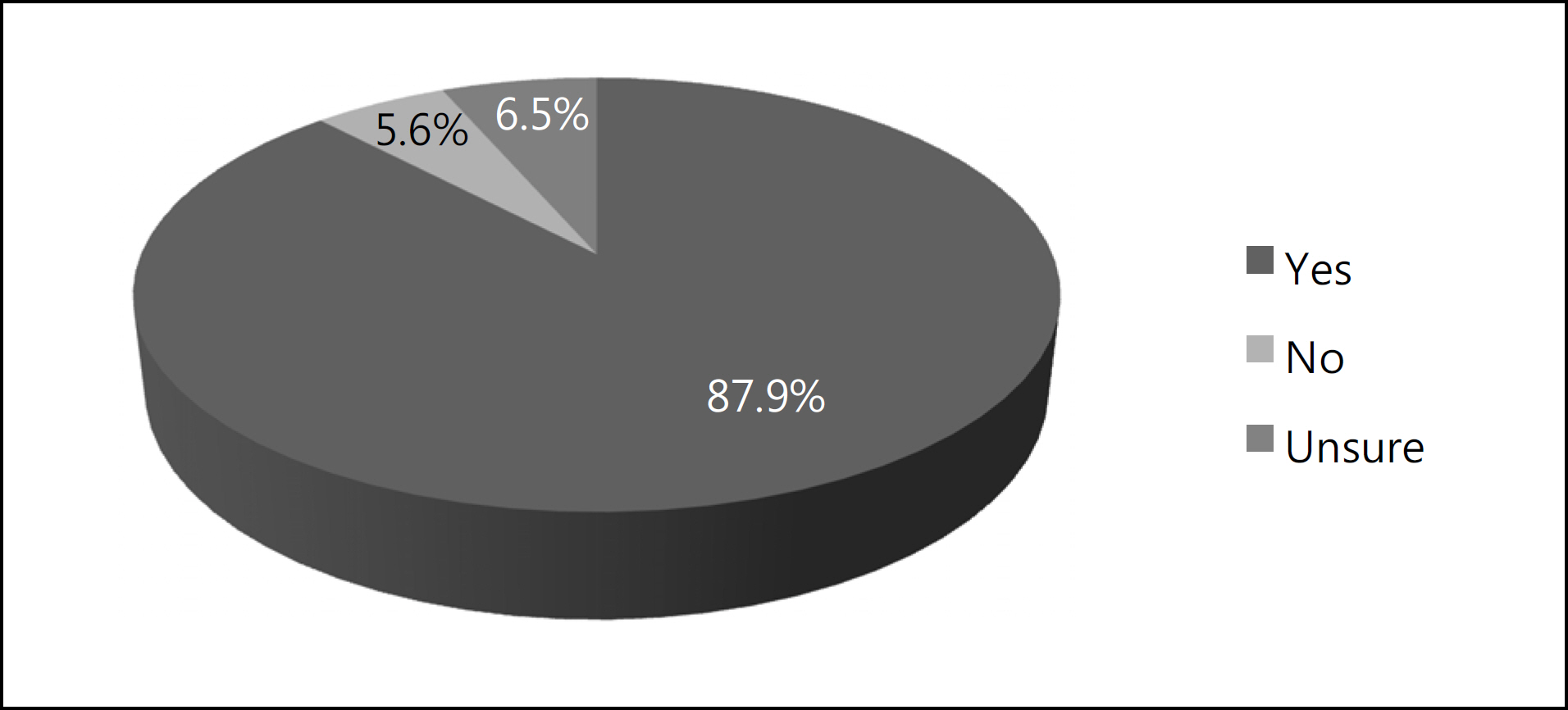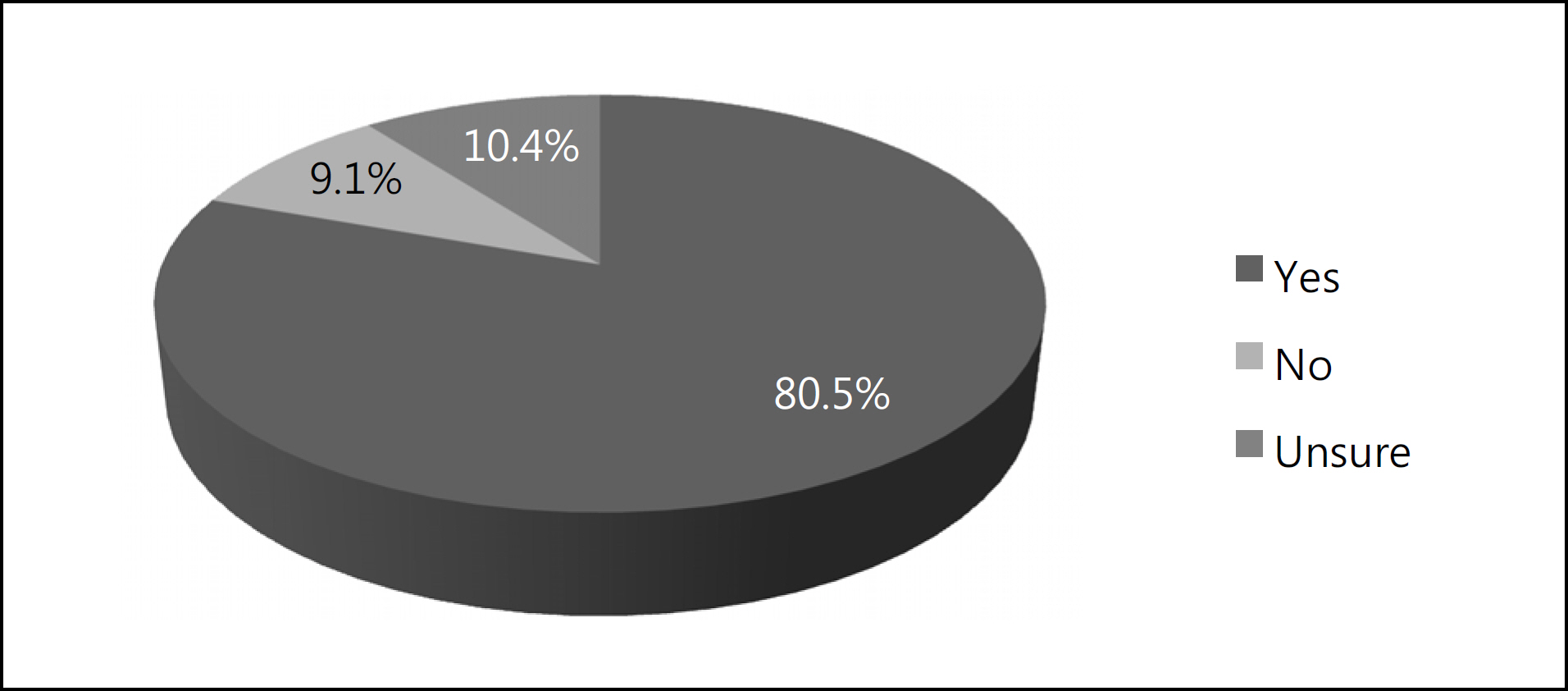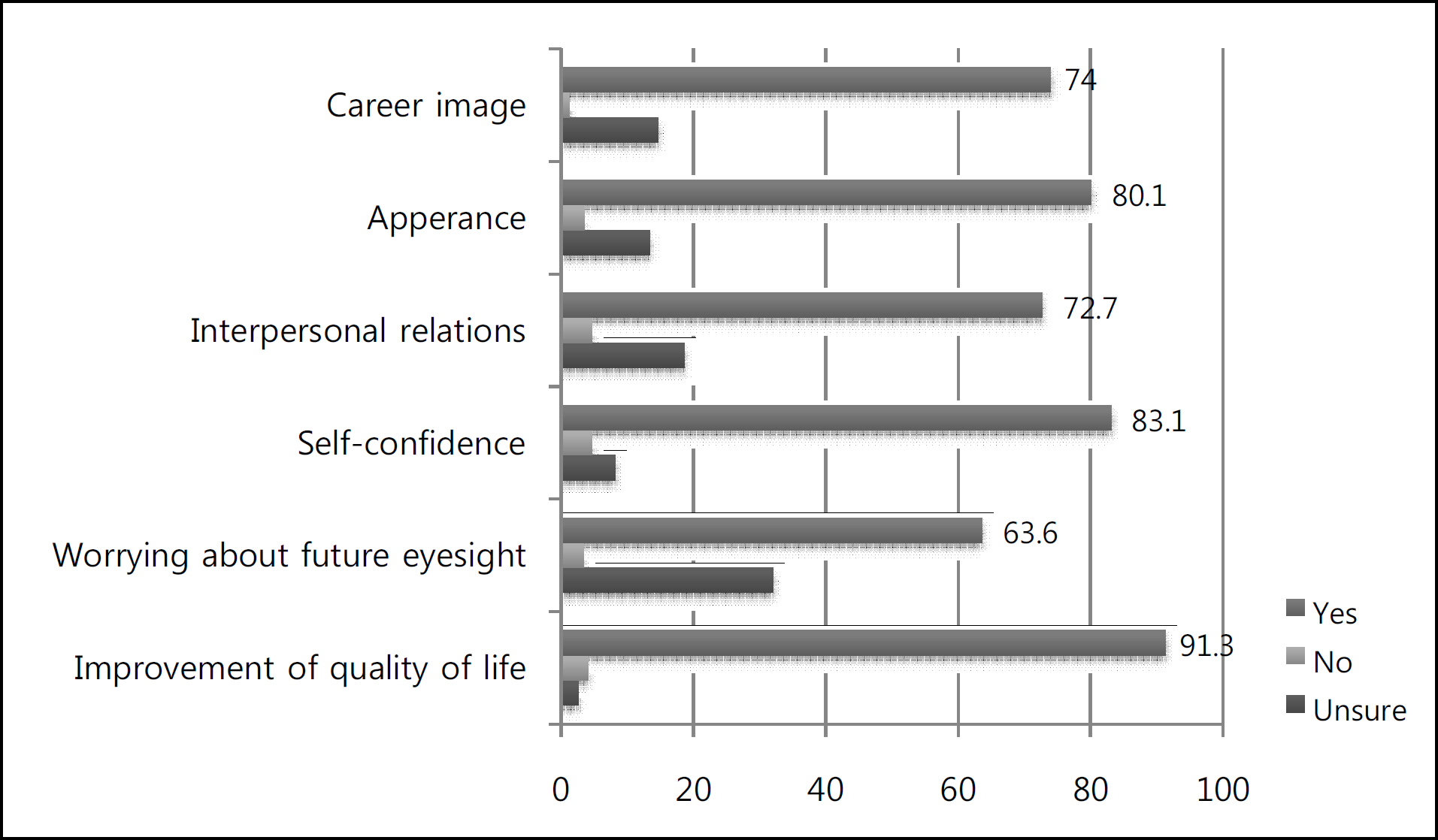J Korean Ophthalmol Soc.
2011 Aug;52(8):922-929. 10.3341/jkos.2011.52.8.922.
Long-Term Quality of Life after Myopic Laser Refractive Surgery
- Affiliations
-
- 1The Institute of Vision Research, Department of Ophthalmology, Yonsei University College of Medicine, Seoul, Korea. tikim@yuhs.ac
- 2Department of Ophthalmology and Visual Science, The Catholic University of Korea School of Medicine, Seoul, Korea.
- 3Department of Ophthalmology, Asan Medical Center, University of Ulsan College of Medicine, Ulsan, Korea.
- 4Department of Ophthalmology, Seoul National University College of Medicine, Seoul, Korea.
- 5BS Eye Center, Seoul, Korea.
- 6National Evidence-based Healthcare Collaborating Agency, Seoul, Korea.
- KMID: 2214768
- DOI: http://doi.org/10.3341/jkos.2011.52.8.922
Abstract
- PURPOSE
To investigate long-term satisfaction and quality of life after myopic laser refractive surgery.
METHODS
This study included 231 myopic patients who underwent laser refractive surgery (LASIK, LASEK or PRK) at least five years prior, between 2002 and 2005, at 5 hospitals. Using a telephone survey, patients were asked to subjectively answer 26 questions regarding satisfaction, quality of life changes, and visual symptoms.
RESULTS
The mean patient satisfaction score was 8.12 (scale of 1 to 10). Improvement in quality of life was reported by 91% of the subjects. Intention to have surgery again was reported by 87.9% of the subjects and intention to recommend refractive surgery to a friend or family was reported by 80.5% of the subjects. The most common discomfort symptoms after myopic laser refractive surgery were dry eye symptoms (57.1%), followed by night vision disturbances (54.3%).
CONCLUSIONS
Long-term satisfaction and quality of life were shown to be positive in patients treated with myopic refractive surgery.
MeSH Terms
Figure
Reference
-
References
1. Trokel SL, Srinivasan R, Braren B. Excimer laser surgery of the cornea. Am J Ophthalmol. 1983; 96:710–5.
Article2. Ambrósio R Jr, Wilson S. LASIK vs LASEK vs PRK: advantages and indications. Semin Ophthalmol. 2003; 18:2–10.
Article3. Aizawa D, Shimizu K, Komatsu M, et al. Clinical outcomes of wavefront-guided laser in situ keratomileusis: 6-month follow-up. J Cataract Refract Surg. 2003; 29:1507–13.
Article4. Knorz MC, Liermann A, Seiberth V, et al. Laser in situ keratomileusis to correct myopia of −6.00 to −29.00 diopters. J Refract Surg. 1996; 12:575–84.
Article5. Pallikaris IG, Papatzanaki ME, Stathi EZ, et al. Laser in situ keratomileusis. Lasers Surg Med. 1990; 10:463–8.
Article6. Dastjerdi MH, Soong HK. LASEK (laser subepithelial keratomileusis). Curr Opin Ophthalmol. 2002; 13:261–3.
Article7. Anderson NJ, Beran RF, Schneider TL. Epi-LASEK for the correction of myopia and myopic astigmatism. J Cataract Refract Surg. 2002; 28:1343–7.
Article8. Litwak S, Zadok D, Garcia-de Quevedo V, et al. Laser-assisted subepithelial keratectomy versus photorefractive keratectomy for the correction of myopia. A prospective comparative study. J Cataract Refract Surg. 2002; 28:1330–3.9. Bailey MD, Mitchell GL, Dhaliwal DK, et al. Patient satisfaction and visual symptoms after laser in situ keratomileusis. Ophthalmology. 2003; 110:1371–8.
Article10. Solomon KD, Fernández de Castro LE, Sandoval HP, et al. LASIK world literature review: quality of life and patient satisfaction. Ophthalmology. 2009; 116:691–701.11. Lee JH, Lee JM, Park GH, et al. Impact of laser in situ keratomileusis (LASIK) treatment on quality of life in myopia patients. J Korean Ophthalmol Soc. 2003; 44:2591–606.12. Park KS, Kim HC, Lim SM, et al. Comparison of patient satisfaction between conventional and customized LASIK. J Korean Ophthalmol Soc. 2006; 47:883–92.13. Nuijts RM, Nabar VA, Hament WJ, Eggink FA. Wavefront-guided versus standard laser in situ keratomileusis to correct low to moderate myopia. J Cataract Refract Surg. 2002; 28:1907–13.
Article14. Schallhorn SC, Kaupp SE, Tanzer DJ, et al. Pupil size and quality of vision after LASIK. Ophthalmology. 2003; 110:1606–14.
Article15. Pop M, Payette Y. Risk factors for night vision complaints after LASIK for myopia. Ophthalmology. 2004; 111:3–10.
Article16. Hammond SD Jr, Puri AK, Ambati BK. Quality of vision and patient satisfaction after LASIK. Curr Opin Ophthalmol. 2004; 15:328–32.
Article17. Lee YC, Hu FR, Wang IJ. Quality of vision after laser in situ keratomileusis: influence of dioptric correction and pupil size on visual function. J Cataract Refract Surg. 2003; 29:769–77.18. Tuan KM. Visual experience and patient satisfaction with wavefront-guided laser in situ keratomileusis. J Cataract Refract Surg. 2006; 32:577–83.
Article19. Sugar A, Rapuano CJ, Culbertson WW, et al. Laser in situ keratomileusis for myopia and astigmatism: safety and efficacy: a report by the American Academy of Ophthalmology. Ophthalmology. 2002; 109:175–87.20. Hersh PS, Steinert RF, Brint SF. Photorefractive keratectomy versus laser in situ keratomileusis: comparison of optical side effects. Summit PRK-LASIK Study Group. Ophthalmology. 2000; 107:925–33.21. Steinberg EP, Tielsch JM, Schein OD, et al. The VF-14. An index of functional impairment in patients with cataract. Arch Ophthalmol. 1994; 112:630–8.22. Mangione CM, Berry S, Spritzer K, et al. Identifying the content area for the 51-item National Eye Institute Visual Function Questionnaire: results from focus groups with visually impaired persons. Arch Ophthalmol. 1998; 116:227–33.
Article23. Mangione CM, Lee PP, Pitts J, et al. Psychometric properties of the National Eye Institute Visual Function Questionnaire (NEI-VFQ). NEI-VFQ Field Test Investigators. Arch Ophthalmol. 1998; 116:1496–504.24. Moreno-Barriuso E, Lloves JM, Marcos S, et al. Ocular aberrations before and after myopic corneal refractive surgery: LASIK-induced changes measured with laser ray tracing. Invest Ophthalmol Vis Sci. 2001; 42:1396–403.25. Kahle G, Seiler T, Wollensak J. Report on psychosocial findings and satisfaction among patients 1 year after excimer laser photo-refractive keratectomy. Refract Corneal Surg. 1992; 8:286–9.
Article26. Powers MK, Meyerowitz BE, Arrowsmith PN, Marks RG. Psychosocial findings in radial keratotomy patients two years after surgery. Ophthalmology. 1984; 91:1193–8.
Article27. Chen CY, Keeffe JE, Garoufalis P, et al. Vision-related quality of life comparison for emmetropes, myopes after refractive surgery, and myopes wearing spectacles or contact lenses. J Refract Surg. 2007; 23:752–9.
Article28. Pesudovs K, Garamendi E, Elliott DB. A quality of life comparison of people wearing spectacles or contact lenses or having undergone refractive surgery. J Refract Surg. 2006; 22:19–27.
Article29. Tahzib NG, Bootsma SJ, Eggink FA, et al. Functional outcomes and patient satisfaction after laser in situ keratomileusis for correction of myopia. J Cataract Refract Surg. 2005; 31:1943–51.
Article30. Brunette I, Gresset J, Boivin JF, et al. Functional outcome and satisfaction after photorefractive keratectomy. Part 2: survey of 690 patients. Ophthalmology. 2000; 107:1790–6.31. Brown SM, Khanani AM. Night vision complaints after LASIK. Ophthalmology. 2004; 111:1619–20.
Article32. Salz JJ, Boxer Wachler BS, Holladay JT, Trattler W. Night vision complaints after LASIK. Ophthalmology. 2004; 111:1620–1.
Article33. Wilson SE, Ambrósio R. Laser in situ keratomileusis-induced neurotrophic epitheliopathy. Am J Ophthalmol. 2001; 132:405–6.
Article34. Savini G, Barboni P, Zanini M, Tseng SC. Ocular surface changes in laser in situ keratomileusis-induced neurotrophic epitheliopathy. J Refract Surg. 2004; 20:803–9.
Article35. Vroman DT, Sandoval HP, Fernández de Castro LE, et al. Effect of hinge location on corneal sensation and dry eye after laser in situ keratomileusis for myopia. J Cataract Refract Surg. 2005; 31:1881–7.
Article36. De Paiva CS, Chen Z, Koch DD, et al. The incidence and risk factors for developing dry eye after myopic LASIK. Am J Ophthalmol. 2006; 141:438–45.
Article37. Mian SI, Shtein RM, Nelson A, Musch DC. Effect of hinge position on corneal sensation and dry eye after laser in situ keratomileusis using a femtosecond laser. J Cataract Refract Surg. 2007; 33:1190–4.
Article38. Fan-Paul NI, Li J, Miller JS, Florakis GJ. Night vision disturbances after corneal refractive surgery. Surv Ophthalmol. 2002; 47:533–46.
Article39. Villa C, Gutiérrez R, Jiménez JR, González-Méijome JM. Night vision disturbances after successful LASIK surgery. Br J Ophthalmol. 2007; 91:1031–7.
Article40. Lackner B, Pieh S, Schmidinger G, et al. Glare and halo phenomena after laser in situ keratomileusis. J Cataract Refract Surg. 2003; 29:444–50.
Article41. Bullimore MA, Olson MD, Maloney RK. Visual performance after photorefractive keratectomy with a 6-mm ablation zone. Am J Ophthalmol. 1999; 128:1–7.
Article42. Haw WW, Manche EE. Effect of preoperative pupil measurements on glare, halos, and visual function after photoastigmatic refractive keratectomy. J Cataract Refract Surg. 2001; 27:907–16.
Article43. Boxer Wachler BS, Huynh VN, El-Shiaty AF, Goldberg D. Evaluation of corneal functional optical zone after laser in situ keratomileusis. J Cataract Refract Surg. 2002; 28:948–53.
Article44. Schallhorn SC, Tanzer DJ, Kaupp SE, et al. Comparison of night driving performance after wavefront-guided and conventional LASIK for moderate myopia. Ophthalmology. 2009; 116:702–9.
Article45. Lee HK, Lee KS, Kim HC, et al. Nerve growth factor concentration and implications in photorefractive keratectomy vs laser in situ keratomileusis. Am J Ophthalmol. 2005; 139:965–71.
Article46. Tuisku IS, Lindbohm N, Wilson SE, Tervo TM. Dry eye and corneal sensitivity after high myopic LASIK. J Refract Surg. 2007; 23:338–42.
Article47. Salomão MQ, Ambrósio R Jr, Wilson SE. Dry eye associated with laser in situ keratomileusis: Mechanical microkeratome versus femtosecond laser. J Cataract Refract Surg. 2009; 35:1756–60.
Article48. Lee JB, Ryu CH, Kim J, et al. Comparison of tear secretion and tear film instability after photorefractive keratectomy and laser in situ keratomileusis. J Cataract Refract Surg. 2000; 26:1326–31.
Article49. Nejima R, Miyata K, Tanabe T, et al. Corneal barrier function, tear film stability, and corneal sensation after photorefractive keratectomy and laser in situ keratomileusis. Am J Ophthalmol. 2005; 139:64–71.
Article50. Pérez-Santonja JJ, Sakla HF, Cardona C, et al. Corneal sensitivity after photorefractive keratectomy and laser in situ keratomileusis for low myopia. Am J Ophthalmol. 1999; 127:497–504.
Article51. Matsui H, Kumano Y, Zushi I, et al. Corneal sensation after correction of myopia by photorefractive keratectomy and laser in situ keratomileusis. J Cataract Refract Surg. 2001; 27:370–3.
Article52. Ambrósio R Jr, Tervo T, Wilson SE. LASIK-associated dry eye and neurotrophic epitheliopathy: pathophysiology and strategies for prevention and treatment. J Refract Surg. 2008; 24:396–407.
Article
- Full Text Links
- Actions
-
Cited
- CITED
-
- Close
- Share
- Similar articles
-
- Long-Term Results of Three Cases of Radial Keratotomy
- No title in English
- Relationship between Optic Disc Parameters and Myopic Refractive Errors in Myopia
- Visual Outcomes of Laser Refractive Surgery in ROKAF Pilot; 7-Year Review
- Factors Affecting Long-term Myopic Regression after Laser In Situ Keratomileusis and Laser-assisted Subepithelial Keratectomy for Moderate Myopia





